How to Do a Perfect Plank for Core Strength & Stability
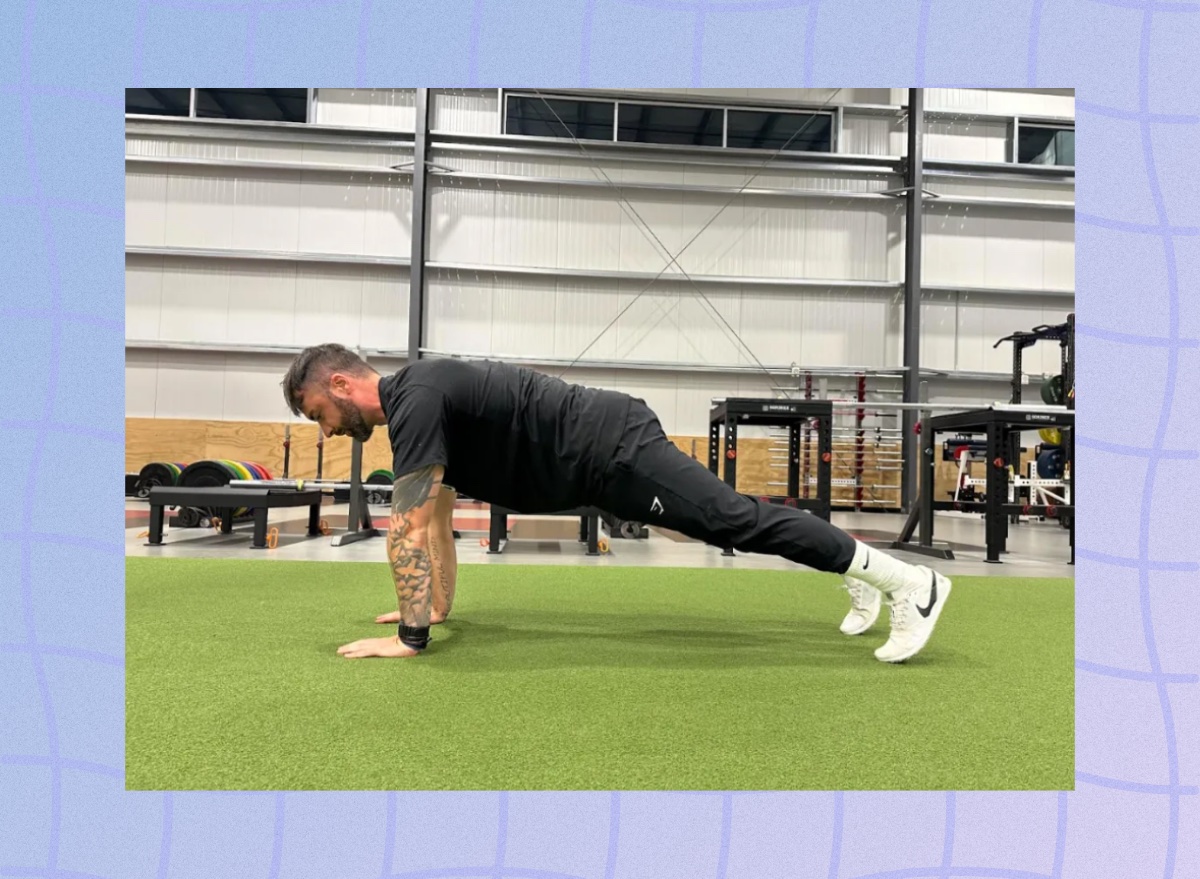
The plank is a simple yet highly effective bodyweight exercise that builds core strength and stability using the benefits of isometric contractions. This foundational move is crucial for anyone looking to improve overall fitness, whether you’re a beginner or an advanced athlete. It’s particularly beneficial because it engages multiple muscle groups simultaneously, helping you develop a stronger core, better posture, and improved balance.
The plank isn’t just for gym-goers; it also supports daily activities by strengthening muscles in functional movements. By including planks in your fitness routine, you can enhance performance in other exercises and prevent injury by improving stability.
In this article, we’ll discuss how to perform a plank perfectly and its most popular exercise variations.
Step-by-Step Guide
Step 1: Starting Position
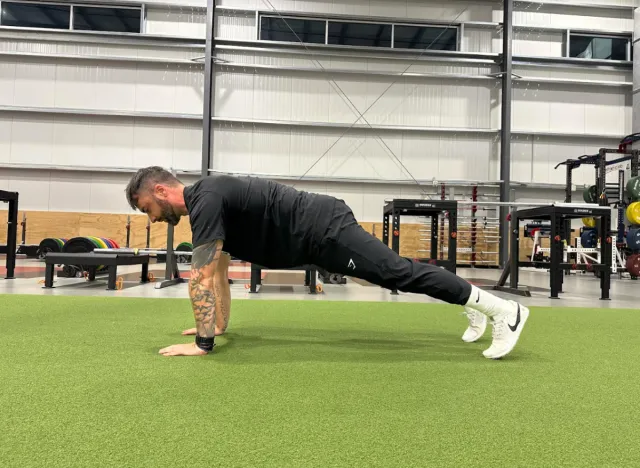
- Get into a pushup position on the floor or a mat.
- Place your hands directly under your shoulders, slightly wider than shoulder-width apart.
- Fully extend your arms with palms flat on the ground and fingers spread for stability.
- Straighten your legs behind you, balancing on your toes.
- Keep your body in a straight line from your head to your heels.
Step 2: Proper Movement Execution
- Engage your core by pulling your belly button toward your spine.
- Tighten your glutes and quads to maintain a straight body alignment.
- Keep your hips level with the rest of your body—avoid sagging or raising them.
- Maintain a neutral neck position by looking slightly ahead to keep your spine aligned.
Step 3: Finishing or Resetting the Position
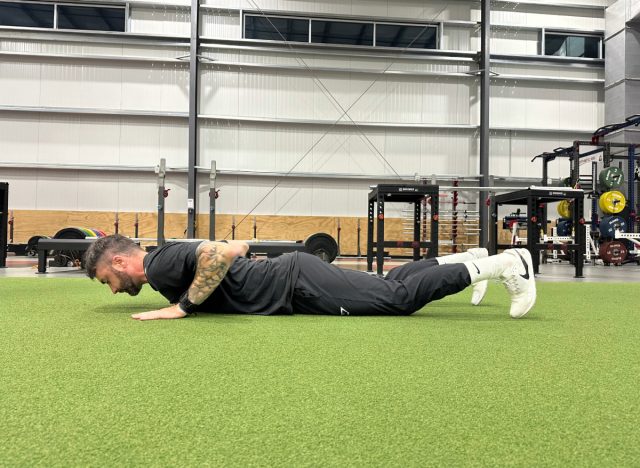
- Hold this position for the desired time, keeping your core engaged and breathing steadily.
- To finish, gently lower your knees to the floor.
- Release the tension in your upper body by lowering your chest to the ground.
- Reset and repeat for additional sets or desired hold time.
Form Tips
- Hand position: Keep your hands aligned with your shoulders to avoid overloading your wrists.
- Posture: Ensure your back is flat and your hips stay aligned with your body, not sagging or raised.
- Breathing: Inhale and exhale deeply, maintaining core tension throughout the movement.
Muscles Worked
The plank is primarily known for strengthening the core muscles, particularly the rectus abdominis, which forms the “six-pack” muscles. It also targets the transverse abdominis, a deep core muscle that provides spinal stability, and the obliques, which help with rotational movements.
Additionally, the plank engages the shoulders, glutes, lower back, and quads, making it a full-body exercise. These muscles work together to maintain posture and stability during the hold, contributing to overall functional strength.
Benefits of the Plank
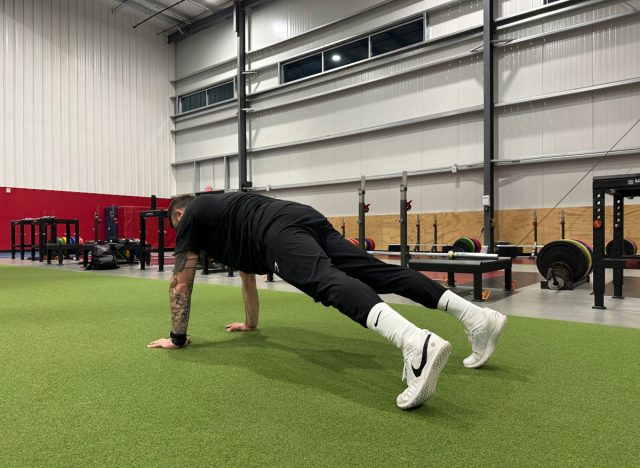
Planks offer benefits beyond core strength. By consistently incorporating them into your routine, you’ll improve stability, balance, and posture, which are crucial for athletic performance and everyday movements.
- A strong core helps stabilize the spine, reducing the risk of lower back injuries.
- Planks enhance muscle endurance, which can translate into improved performance in activities like running, lifting, and even sitting for long periods without discomfort.
- Since planks engage multiple muscle groups simultaneously, they are efficient for building total-body strength and improving functional fitness, making daily tasks easier and safer.
Common Mistakes and How to Avoid Them
1. Sagging Hips
One of the most common errors is allowing the hips to drop, which strains the lower back. To avoid this, focus on engaging your core and squeezing your glutes.
2. Raised Hips
Some people lift their hips too high, reducing the exercise’s effectiveness. Your body should form a straight line. Check your form in a mirror or ask a partner for feedback.
3. Looking Up
Tilting your head up can strain your neck. Keep your neck neutral by gazing slightly ahead of you.
4. Holding Your Breath
Many people hold their breath while doing planks, leading to fatigue. Remember to breathe steadily throughout the exercise.
Exercise Variations
1. Forearm Plank (Beginner)
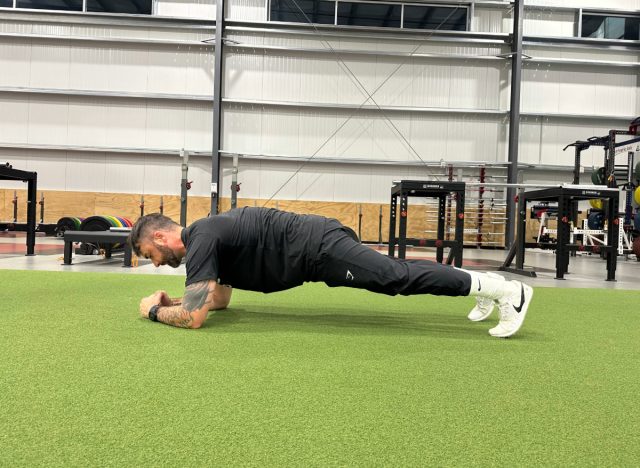
The forearm plank is a potent progression from the tall plank, as it reduces pressure on the wrists while still engaging the core, shoulders, and glutes. By lowering down onto the forearms, this variation allows you to focus more on core stability without the challenge of supporting your full weight through your arms, making it ideal for beginners or those working on wrist strength.
How to Perform a Forearm Plank:
- Start in a tall plank position with your arms extended.
- Lower your body onto your forearms, ensuring your elbows are directly under your shoulders.
- Keep your body straight from your head to your heels, engaging your core.
- Hold the position for the desired time, maintaining core tension and steady breathing.
2. Side Plank (Intermediate)
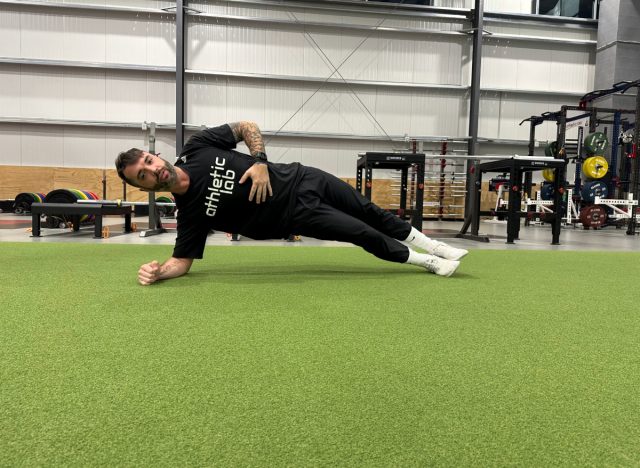
The side plank builds upon the traditional plank by targeting your obliques and improving lateral core strength. As you support your body on one arm and side, it also helps enhance balance and stability, making it a solid progression from the tall plank for those looking to challenge their core in a different plane of movement.
How to Perform a Side Plank:
- Begin in a tall plank position with your arms extended.
- Rotate your body to one side, stacking your feet on top of each other.
- Raise your opposite arm towards the ceiling, keeping your hips lifted and your body in a straight line.
- Support your body with one forearm or hand on the ground, keeping your core tight and holding for the desired duration.
- Switch sides and repeat.
3. Plank Jack (Intermediate)
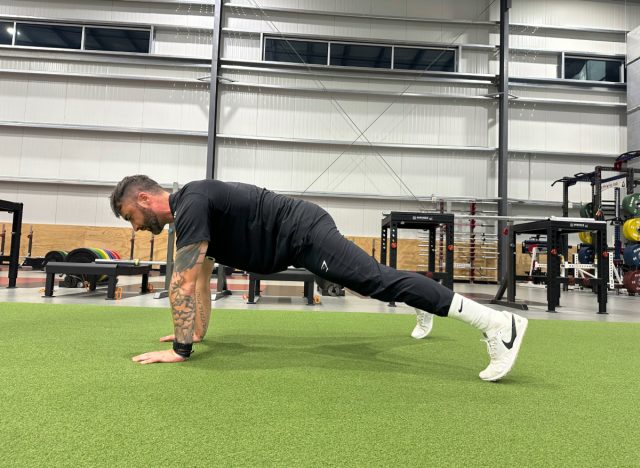
The plank jack adds a cardio component to the traditional plank, challenging your core while boosting your heart rate. This dynamic movement works your legs, engages your core, and increases the intensity of the workout, making it a step up from the tall plank.
How to Perform a Plank Jack:
- Start in a tall plank position with your arms extended and your body in a straight line.
- Jump your feet out wide, similar to a jumping jack, while keeping your upper body stable.
- Quickly jump your feet back together to return to the starting position.
- Maintain proper plank form throughout, and repeat for the desired number of reps or time.
4. Plank to Pushup (Advanced)
The plank-to-pushup variation is a progression that significantly increases the difficulty of a standard plank by incorporating upper body strength and coordination. This exercise engages your chest, shoulders, and triceps while demanding core stability, making it ideal for those ready for an advanced challenge.
How to Perform a Plank-to-Pushup:
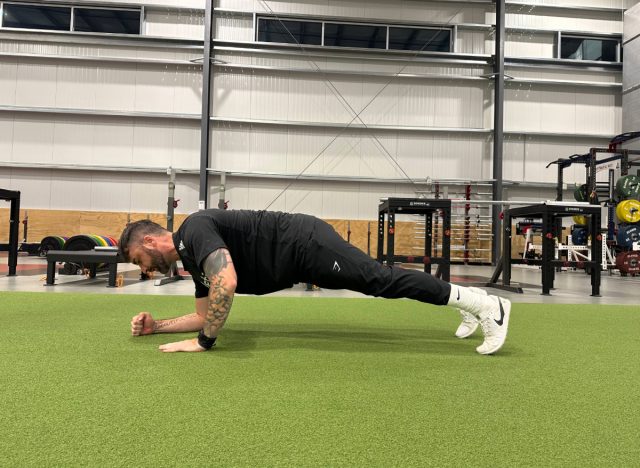
- Begin in a forearm plank with your elbows directly under your shoulders.
- Press up onto your right hand, followed by your left, until you’re in a tall plank position.
- Lower back down to your forearms one arm at a time, starting with your right, then your left.
- Repeat the movement, alternating arms for the desired number of reps or time.
How to Incorporate Planks Into a Workout
Planks can easily be added to any workout routine as a warm-up to engage your core or as part of a strength circuit.
Aim for three sets of 30 seconds, gradually increasing the duration as you build core strength. For a more challenging routine, combine planks with other core exercises like mountain climbers or Russian twists for a full-core workout.
You can also include planks in high-intensity interval training (HIIT) sessions by holding the plank for a set time, then transitioning to another movement like pushups or squats.
Conclusion
The plank is a must-have exercise in any fitness routine. It offers an efficient way to build core strength, stability, and endurance. By targeting multiple muscle groups and improving posture, it benefits everyone, from beginners to advanced athletes.
Start with the basic plank and gradually progress to more challenging variations as your strength improves. Remember to focus on proper form and consistency for the best results.